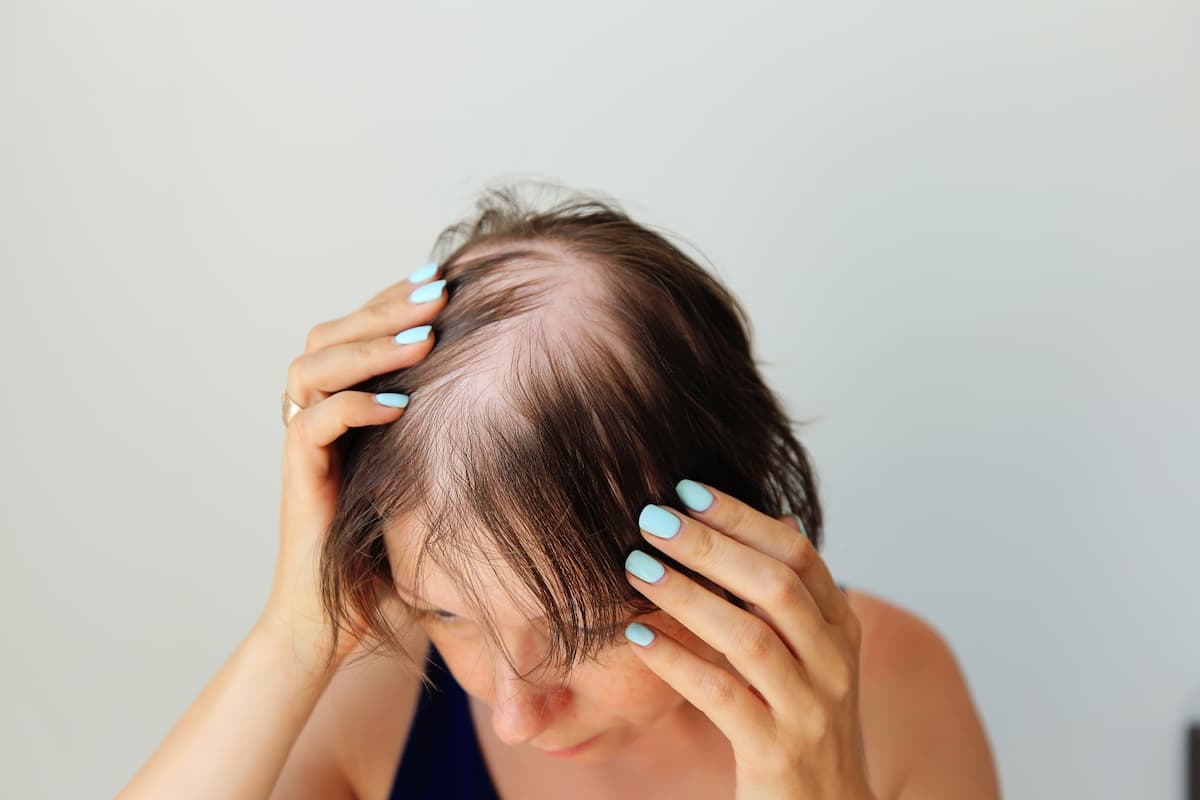- Center on Health Equity & Access
- Clinical
- Health Care Cost
- Health Care Delivery
- Insurance
- Policy
- Technology
- Value-Based Care
New Strategies and Combinations Could Help Address AA Relapse
Janus kinase inhibitors can be paired with corticosteroids or used as monotherapy in the treatment of alopecia areata.
Combination strategies and switching therapies can be effective options for people with alopecia areata when monotherapy proves ineffective, a new study suggests.
The study is based on a case report published in the Journal of Cosmetic Dermatology.1 Alopecia areata has traditionally been treated with corticosteroids and immunosuppressants, the authors explained. Those therapies, however, have shown limited efficacy and have a variety of side effects.
More recently, Janus kinase (JAK) inhibitors have been proposed as a possible therapeutic strategy for alopecia areata and other autoimmune disorders.
Though it would seem surprising for alopecia therapies with overlapping targets to lead to different patient outcomes, the authors said the evidence suggests the strategy can work. | Image credit: Nadya Kolobova - stock.adobe.com

A 2024 study of 97 patients with one of 3 types of alopecia found that 69.1% of patients experienced at least 50% improvement in their Severity of Alopecia Tool (SALT) scores after taking oral tofacitinib (Xeljanz; Pfizer) for 6 months.2 Forty-four percent of participants had a 90% of greater improvement in their scores.
Still, even patients who have success with JAK inhibitors face a significant risk of recurrence. One study of 22 children and young adults taking tofacitinib for alopecia areata showed that 8 of the patients had recurrence even though they were being treated continuously with the drug.3
The new case report described the case of a 26-year-old female patient who had experienced patchy hair loss and delayed hair growth for the past 9 years.1 She had previously tried a number of different therapies, which led to recovery of her eyebrows and pubic hair but had no impact on her scalp hair. The patient then tried intralesional corticosteroid therapy, but it led to unsatisfactory results, the authors said.
When she sought treatment at the authors’ clinic in 2023, she had sparse scalp hair and a SALT score of 80, which is indicative of severe alopecia. After a series of assessments, she was diagnosed with alopecia universalis. At that point, clinicians recommended treatment with tofacitinib at 5 mg twice daily.
After 28 weeks, the patient had experienced a significant increase in hair density and did not have any systemic side effects. However, at a follow-up 8 weeks later, her SALT score had increased and her hair loss had resumed. The patient opted against switching medications but agreed to add an intramuscular injection of betamethasone.
By 40 weeks, her SALT score was up to 30. She was given another betamethasone injection and continued taking tofacitinib. Seven weeks after that, her hair loss had largely stopped, the authors said, and her SALT score had improved to 5.
When her SALT score began to rise again at week 55, the patient switched to ritlecitinib (Litfulo; Pfizer). At 66 weeks, the therapy appeared to be working, with her SALT score back down to 5. However, the investigators said at their most recent follow-up no signs of hair regrowth were evident.
The authors outlined 3 potential strategies for treating patients in light of their findings. The first was a combined drug strategy. They said patients who do not respond to tofacitinib alone might respond to the combination of tofacitinib and corticosteroids. They added that more studies evaluating other potential combinations are warranted.
Another strategy would be to increase the dose of tofacitinib. They said existing evidence suggests increasing doses of the drug can improve efficacy. Thus, they said it might be efficacious to increase the dosage or treatment duration in patients who relapse while taking tofacitinib.
Lastly, they said patients who relapse on tofacitinib might benefit from switching to another JAK inhibitor. Though it would seem surprising for therapies with overlapping targets to lead to different patient outcomes, the authors said the evidence suggests the strategy can work.
“Given the significant inter-patient variability and the complex nature of alopecia areata's pathophysiology, treatment outcomes can differ markedly,” they concluded. “When monotherapy proves ineffective, alternative treatment strategies should be considered.”
References
1. Yao L, He J, Lan N, Lv Y. Considerations for the treatment strategy of relapse after tofacitinib therapy in alopecia areata. J Cosmet Dermatol. 2025;24(7):e70234. doi:10.1111/jocd.70234
2. Nasimi M, Abedini R, Ghandi N, Teymourpour A, Babaie H. Safety and efficacy of tofacitinib in 97 alopecia areata patients. J Cosmet Dermatol. 2024;23(9):2807-2813. doi:10.1111/jocd.16356
3. McKenzie PL, Castelo-Soccio L. Alopecia areata flare patterns in children and young adults while on systemic tofacitinib. J Am Acad Dermatol. 2022;86(3):683-685. doi:10.1016/j.jaad.2021.02.071
